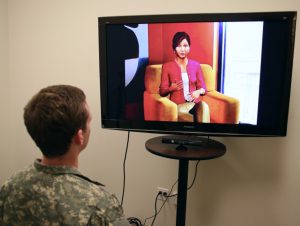
Researchers in the University of Alberta recently trained a machine learning model to detect people with Post-Traumatic Stress Disorder (PTSD) by mere analysis of texts these people wrote with 80% accuracy. The model has potential of becoming an accessible and affordable tool to assist health professionals in identifying and diagnosing PTSD or other mental health illnesses.
Psychiatry PhD candidate, Jeff Sawalha, Project Lead, carried out a sentiment analysis of text from a dataset created by USC’s Institute of Creative Technologies’ Jonathan Gratch. Sentiment analysis consists of collecting a large body of data, like a series of tweets and grouping them— for example, into those that are positive and those that are negative. This was explained by Russ Greiner, Professor in the Department of Computing Science and Founding Director of the Alberta Machine Intelligence Institute.
‘We wanted to strictly look at the sentiment analysis from this dataset to see if we could properly identify individuals with PTSD just using the emotional content of these interviews,’ said Sawalha.
The text data in the USC dataset was collected through 250 semi-structured interviews conducted by an AI, Ellie, over video conferencing calls with 275 people— 188 without PTSD and 87 with it.
Sawalha’s team were able to detect the people with PTSD through scores showing how frequently their speech was neutral or negative.
‘This is in line with a lot of the literature around emotion and PTSD. Some people tend to be neutral, numbing their emotions and maybe not saying too much. And then there are others who express their negative emotions.’
The process is extremely complicated. A simple sentence like ‘I didn’t hate that’ could be difficult to classify, explained Greiner. However, Sawalha’s ability to glean information from the text data alone about which individuals had PTSD shows potential of application of similar models to other mental health disorders.
‘Text data is so ubiquitous, it’s so available, you have so much of it,’ said Sawalha. ‘From a machine learning perspective, with this much data, it may be better able to learn some of the intricate patterns that help differentiate people who have a particular mental illness.’
‘Unlike an MRI that takes an experienced person to look at it, this is something people can do themselves. I think that’s the direction medicine is probably going, toward more screening tools,’ said Greiner, also the Adjunct Professor in the Department of Psychiatry and member of the Neuroscience and Mental Health Institute.
‘Having tools like this going forward could be beneficial in a post-pandemic world,’ said Sawalha.
By Marvellous Iwendi.
Source: University of Alberta